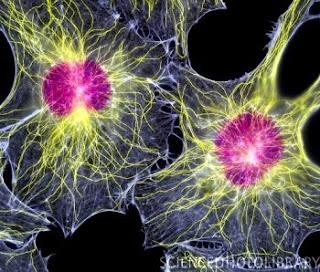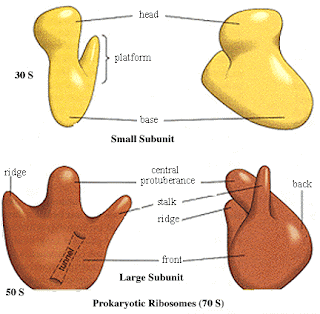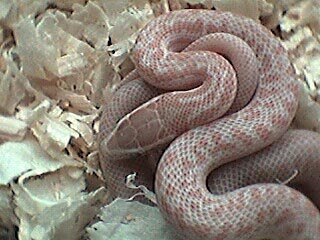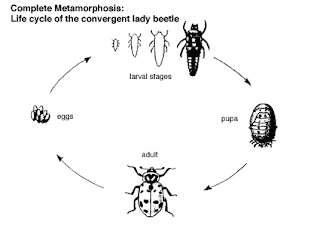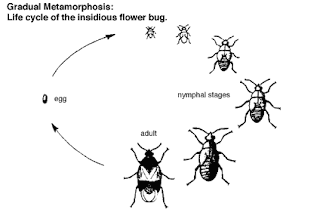What is in the air in your home, where you work, or in public buildings? There may be bioaerosols — airborne biological contaminants. Aerobiological health hazards affect everyone on a daily basis and include allergens, mold spores, bacteria, and viruses that cause infectious diseases. How can these hazards be controlled indoors?
Aspergillus fumigatus is a fungus whose spores are common inhalation pollutants that pose a health hazard. Photo: Centers for Disease Control and Prevention.
Aerobiological engineering is a field of study that combines elements of engineering and microbiology that focus on reducing the risk of airborne disease by controlling the aerobiology of our indoor environments. It offers some solutions to the hazards of bioaerosols:
- Existing technologies can collectively control these bioaerosols if we retrofit old buildings or specifically design new buildings to control airborne microbes.
- By re-engineering our buildings on city-wide scales, the population can be broadly protected and potentially immunized against epidemics.
- Developing standards for indoor environments and educating the public are critical steps to transforming our disease-prone society.
Aerobiological health threats
Contagious diseases are the most dangerous and costly threats posed to building occupants today, including influenza, SARS, tuberculosis, pneumonia, and meningitis. Emerging pathogens such as avian flu and the resurgence of old diseases like plague, scarlet fever, whooping cough, and measles highlight the increasing vulnerability of populations to epidemic disease.
The technologies needed to create healthy buildings already exist, but they are not implemented widely enough to interdict epidemics. Optimized combinations of filtration and ultraviolet germicidal irradiation (UVGI) can be used to remove airborne microbes with high efficiencies. Combining and optimizing these technologies is the most cost effective means of disinfecting indoor air.
- Filtration removes airborne particles including mold spores, many bacteria, and allergens.
- UVGI eliminates many harmful bacteria and viruses.
Existing buildings can be retrofitted with air disinfection systems, but the most economic long-term solution is to construct new buildings that maintain aerobiological cleanliness by design. Air circulation is often poor in older buildings, and there are limits to what retrofitted air-cleaning systems can do for them. New buildings can be built in which the airflow is more evenly distributed and in which effectiveness of air cleaning can be maximized.2 A variety of other technologies, including photocatalytic oxidation (PCO), ozone, pulsed light, and antimicrobial materials, are also available options for air and surface biocontamination problems.
Criteria for rating healthy buildings
Modern air disinfection systems can achieve high levels of air cleaning, but limited budgets often require us to ask exactly how much air cleaning is needed to protect health. This question ultimately hinges on how buildings rate:
- aerobiologically — the indoor levels of airborne microbes
- epidemiologically — the infection risk of the building
Airborne levels of microbes
Indoor air contains a great variety of bioaerosols, most of which are relatively harmless to healthy humans. The concentration of airborne microbes in indoor environments, treated collectively without regard to species, provides a reasonable indication of overall aerobiological air quality. Levels of bacteria and fungi vary by season, with lows in winter, and increase with occupancy, as people are the primary source of contagious pathogens. Airborne levels are measured in terms of colony-forming units (cfu) of bacteria or fungi per cubic meter. Some hospital operating rooms are designed to maintain levels as low as 10 cfu/m3, although this level often proves difficult to achieve. Levels in homes and offices need not be this low, making solutions there less cost-prohibitive.
Infection risk
The infection risk (IR) of any building might be estimated by collecting data on infection rates and symptoms or through methods of risk analysis.3 Another approach is to estimate the risk using computer models of building airflow to calculate daily doses of inhaled contaminants. Airborne levels can be easily, if not always accurately, assessed with air samplers. The IR to an occupant in a particular building can be evaluated from epidemiological data. The IR can also be inversely viewed as the percentage of occupants protected from infection, a parameter called the building protection factor (BPF).
The BPF is the complement of the IR— a low IR implies a high BPF— and it can be used to rate and compare buildings under a common design basis. The BPF is primarily a function of the volume, airflow, outside air fraction, and removal efficiency of the air disinfection system. Being an intrinsic property of the building, it applies generically to all microbial species.4
Buildings differ according to their operating parameters. A completely unprotected building may have a BPF of 0% to 1%, whereas a building that maximizes protection of occupants may have a BPF of up to 99%. BPF can be considerably improved in existing buildings through the addition of air cleaning or other ventilation system improvements.
At least four general categories of buildings have been suggested:
- Problem buildings foster aerobiological problems or act as amplifiers. Their airborne levels may exceed 10,000 cfu/m3. IR can approach 99% or more and BPF 1% or less.
- Normal buildings have average airborne levels, about 500 to 5000 cfu/m3. Typically, IR is about 50% to 75% and BPF about 25% to 50%.
- Healthy buildings promote good air quality and health or are above average. Airborne levels are 100 to 1000 cfu/m3. Typically, IR is less than 50% and BPF 50% or higher.
- Immune buildings are designed to actively prevent airborne disease transmission. Airborne levels are as low as 10 cfu/m3. IR is less than 10% and BPF 90% or higher.
Disease-free buildings
Buildings concentrate allergens due mainly to the protective effects of shade, warmth, substrate materials, and moisture. For the same basic reasons, they act as vectors (carriers) for contagious airborne diseases. Humans have been building enclosed habitats for perhaps half a million years, and in this course of time airborne pathogens evolved the ability to survive indoors just long enough to transmit to new hosts. They have adapted to our enclosed habitats so completely that they cannot survive outdoors. This evolutionary process accelerated when man began husbanding animals, from which almost all human pathogens seem to have jumped species. The evolutionary process continues today as emerging pathogens adapt to indoor transmission, and the number of new disease species has increased exponentially over time, in concert with the size and density of the human population.
By designing our habitats strictly for human comfort, we have unwittingly fostered the adaptation and proliferation of dangerous pathogens. It is only by re-engineering our buildings to eliminate, rather than foster, airborne disease transmission that we can reverse this evolutionary trend. By immunizing enough buildings against disease, it is theoretically possible to develop herd immunity in a community or city. The percentage of buildings that would need to be immunized to block an airborne epidemic is similar to the percentage of a population vaccinated to achieve herd immunity, and depending on the contagiousness of the species, this may be as low as 30%.
In addition to air disinfection and improved delivery of clean air, there are other factors that can aid in the development of healthy buildings. Rugs, carpets, furniture, draperies, and the like can absorb mold spores and regenerate new ones if they become wet. Material selectivity can be one beneficial approach, and other alternatives include the use of self-disinfecting materials, pressurization, and isolation of zones within buildings, including the provision of buffer zones between the inside and outdoor air and the creation of clean inner zones safe from airborne health threats.
Regulating healthy buildings
Implementing changes to building construction on a vast enough scale to control epidemics would require governmental programs. As yet there are virtually no existing standards or laws regarding the aerobiological healthiness of buildings. It is curious to note that airborne chemical contaminants are regulated in many states while airborne pathogens, which cause far more fatalities, are not.
The key to regulation is the development of aerobiological air quality standards. Several organizations and government agencies are involved in the control of disease epidemics, including the Centers for Disease Control and Prevention (CDC), National Institute of Occupational Safety and Health (NIOSH), and World Health Organization (WHO), but none of them is responsible for regulating the living environments in which these diseases are transmitted.
The task of improving air quality in homes, schools, and offices has mostly fallen to independent professional societies. The American Society of Heating, Refrigerating, and Air-Conditioning Engineers (ASHRAE) has had a long and active interest in air quality, healthy buildings, and green buildings, and it is currently developing new programs in these directions. The International Ultraviolet Association (IUVA) is currently drafting a set of guidelines to assist in the design, development, implementation, and testing of UVGI and other air- and surface-cleaning systems.
Aerobiologically green buildings
Green building design is a field geared toward constructing sustainable indoor environments without damaging the environment. Green is clean, as they say, and healthy. The concept of human health is intrinsic to both this field and to aerobiological engineering, and common ground can be found through the exploration of aerobiologically green buildings that implement sustainable technologies for air and surface cleaning.
An example of where these fields overlap is the selection of building materials and furnishings that are both ecofriendly and less likely to contribute to health problems. Solar exposure can provide benefits, since sunlight can destroy mold spores, bacteria, and viruses. Radiant floor heating is an energy-efficient alternative to covering floors with carpets, as are dedicated outside air systems that efficiently control humidity. Although forced air is generally considered a necessity for air cleaning, buildings can also be naturally ventilated using wind energy.
Hygienic protocols
Engineering may go a long way toward the control of airborne diseases, but it may not be sufficient to eradicate them if other transmission routes remain unattenuated. Direct contact may be the dominant route of infection for many pathogens considered airborne, and engineering alone cannot control unhygienic human behavior. People must be educated to protect themselves, and for this purpose we need to define a set of protocols for human hygiene. These might include hand-washing procedures, quarantining contagious individuals, and other commonsense practices that can be taught in elementary school.
Many office workers today are so motivated they come to work during the contagious phase of their infection, placing other workers at risk. Economic losses from lost work and diminished productivity can be staggering. Working at home and in-office quarantine are two options for employers.
What can the individual do?
The most important thing individuals can do to protect themselves against airborne disease is to become educated about sources and transmission routes of airborne pathogens. Proximity to a contagious individual for as little as one hour can cause a secondary infection. Families with children must be especially careful since the youngest children tend to bring home diseases from schools, which are then transmitted to the rest of the family. Frequent hand washing and isolating sick children in bedrooms is one approach to protecting the rest of the family.
In regard to allergens, the home environment can be improved in some simple ways even without air cleaning. Old rugs and carpets that absorb spores can be cleaned, removed, or replaced with alternatives such as linoleum or other growth-resistant materials, and the amount of sunlight entering a home can be increased in various ways.
Misconceptions about disease must be dispelled. For example:
- The myth that colds and flus come from outdoor air has persisted since the ancient world and is kept alive every time children are told to “bundle up or you’ll catch a cold.”
- Another popular misconception is that some disease is beneficial, or that disease makes you stronger, but such fuzzy ideas are not grounded in science. Acquired immunity from pathogenic disease is always specific, never providing any general protection, and is often temporary at best. It is true our bodies are filled with friendly bacteria that were once parasites, but if selection for antibiotic resistance is allowed to continue, millions could become victims of unnecessary plagues.
Conclusion
Humanity stepped beyond the hardships of living in the elements by building habitats, but modern human culture and technology have created new contingencies and unexpected problems. It is well within human capabilities to redesign buildings and cities to be resistant to epidemic airborne disease, which is arguably the most serious threat we face today. Human health is a global concern, and achieving it begins with education, redesign of living environments, and large-scale implementation of aerobiological standards. The ultimate goal of these efforts must be disease eradication; all other remedies are merely triage and half-measures that fail to deal directly with the environments that are the root of the airborne disease problem today.
Read more / Selengkapnya...







